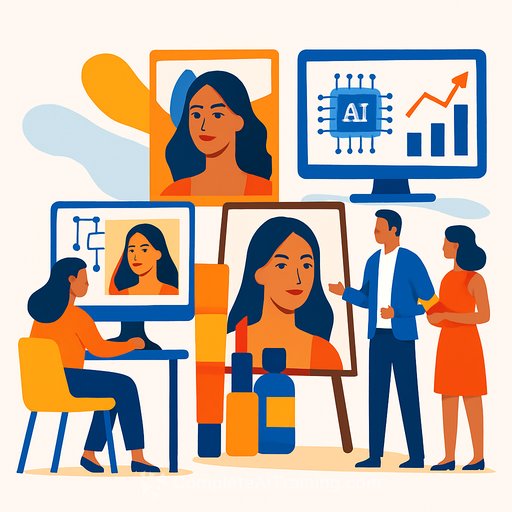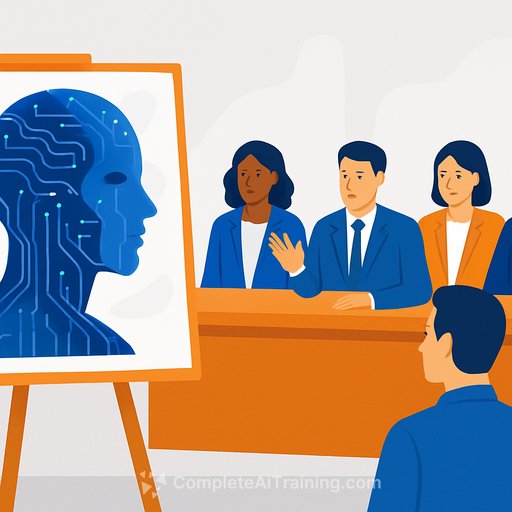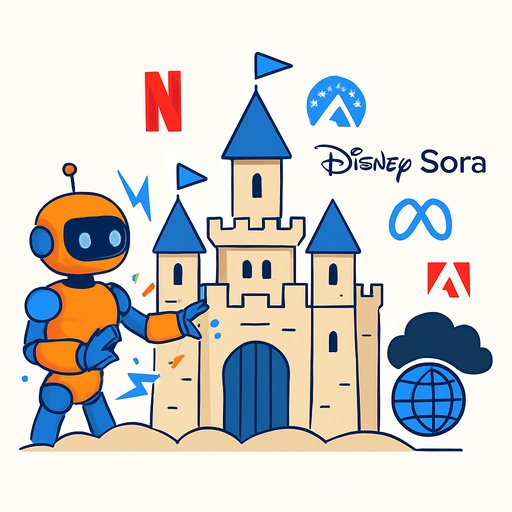Generative AI Inside Unilever’s AI Beauty Marketing Assembly Line — and Its Implications for Agencies
Unilever has built an in-house generative AI system to create digital marketing assets for its beauty and wellbeing brands. This AI-powered assembly line is now active in 18 markets, including the U.S. and U.K., and is used across brands like Dove Intensive Repair, TRESemme Lamellar Shine, and Vaseline Gluta Hya.
Instead of the traditional process of sending briefs and waiting for content, Unilever has adopted a more agile, iterative workflow. The company now produces around 400 creative assets per product, a significant increase from the 20 assets per campaign they used to create.
How the System Works
The AI system is based on Pencil Pro, a generative AI tool developed by Brandtech Group. It leverages multiple large language models (LLMs) and connects with APIs from platforms like Meta and TikTok to measure ad effectiveness.
Marketers prompt the system with insights about their target audiences to generate images and videos using 3D renders of products—a technique known as “digital twinning.” Each brand is equipped with a “BrandDNAi” tool that ensures the AI-generated content complies with brand guidelines and regulations. This cloud-based platform combines LLMs, retrieval-augmented generation (RAG) frameworks, and REST APIs to manage the process.
Unilever currently restricts the AI from generating images of people, focusing solely on product visuals. This approach has cut creative production time by 30%, while key performance metrics like video completion rate (VCR) and click-through rate (CTR) have doubled.
While exact cost savings haven’t been disclosed, Unilever aims for double-digit percentage reductions in marketing budgets. Industry reports suggest that integrating AI can cut creative production spending by around 27%. Considering Unilever’s massive £7.8 billion ($10.42 billion) marketing budget in 2024, even modest savings represent substantial amounts.
Commitment Beyond Technology
Unilever didn’t just invest in technology—they also prioritized training and organizational alignment. Since partnering with Brandtech in 2023, much of 2024 was spent refining the Beauty AI Studio and rolling out “AI fluency training” to 25,000 employees.
What This Means for Creative Agencies
Unilever has historically worked with about 3,000 agencies worldwide but has been consolidating that roster, particularly after merging much of its beauty and wellbeing business with WPP in 2024.
Industry analysts expect advertisers to take a hybrid approach to AI, using agencies as AI pioneers rather than fully internalizing the technology immediately. Major agency groups like WPP and Dentsu are already integrating AI-enabled production capabilities into their offerings through units like Hogarth and Tag.
However, several challenges slow AI adoption: responsible use guidelines, transparency with consumers, data silos, and uncertain regulation. Although 30% of marketing leaders plan to bring more marketing work in-house, only about 62% of marketing teams have had any generative AI training.
Experts suggest that agencies will still be needed to implement, run, and train teams on AI tools during this transition. Many large CPG brands, including General Motors, Mondelez, and Coca-Cola, currently outsource AI production capabilities to agencies rather than build in-house teams.
Looking ahead, agencies might be asked to hand over production to internal AI-augmented teams. This shift raises critical questions about agency remuneration and the sustainability of traditional agency business models. Smaller agencies without the tech infrastructure or capital of large holding groups may find it difficult to compete.
Unilever emphasizes AI as a support tool rather than a replacement for creative talent. The company expects AI to free up time for creative professionals to focus on human-led elements of storytelling and strategy. They continue to collaborate closely with a diverse set of agency partners and technology platforms.
Brandtech also points out that Unilever’s AI setup isn’t a one-size-fits-all solution. Each client’s transformation journey differs. But if more major advertisers adopt similar AI assembly lines, the creative agency landscape could face significant disruption.
Key Takeaways for Creatives
- Generative AI can massively increase the volume of creative assets produced and speed up production timelines.
- AI systems like Unilever’s rely on carefully designed brand-specific tools to keep content on-brand and compliant.
- AI adoption requires investment in staff training and process change, not just technology acquisition.
- Agencies remain essential during AI integration but may face pressure as brands bring more production in-house.
- Creative professionals should focus on the uniquely human aspects of creativity that AI cannot replicate.
For creatives looking to stay ahead, gaining AI fluency and understanding how to work alongside these tools will be vital. Explore practical AI courses and certifications to build your skills and adapt to this evolving landscape.
Check out Complete AI Training’s courses for marketing and creative professionals to learn how to integrate AI into your workflow effectively.
Your membership also unlocks:






